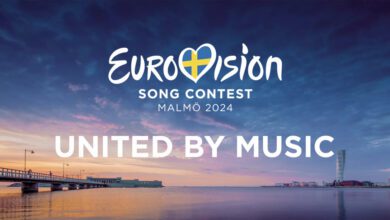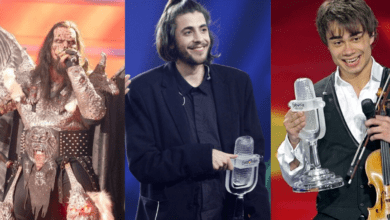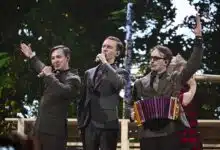Eurovision behind the scene: an in-depth look at a high-tech event
Eurovision is not just a contest, it's also a technical and visual feat. The 2024 edition marked a turning point with the introduction of new production technologies, bold creative choices and perfect coordination between the technical and artistic teams. Here's a look at what made this edition such an unforgettable event.
Eurovision behind the scene: The centre stage
Every year, the Eurovision stage is a work of art in itself. Every detail is carefully designed to create an immersive visual and acoustic experience. In Malmö in 2024, the main challenge was to design a central stage that could be surrounded by the audience to almost 360 degrees. This unique layout posed challenges, not least the need to conceal technical equipment such as monitors, pyrotechnics and automation systems, which suddenly become visible in the diagonal shots.
To overcome these obstacles, the production team had to rethink the layout of these elements to hide the technicians behind screens, for example, and to integrate the equipment into the set so that it was as inconspicuous as possible. The stage itself also had to support enormous loads, in particular the suspended LED cubes, each weighing 2.8 tonnes. Thanks to several meetings with engineers and a spectacular grid structure, they were able to distribute the weight safely to avoid putting too much strain on the roof of the hall.
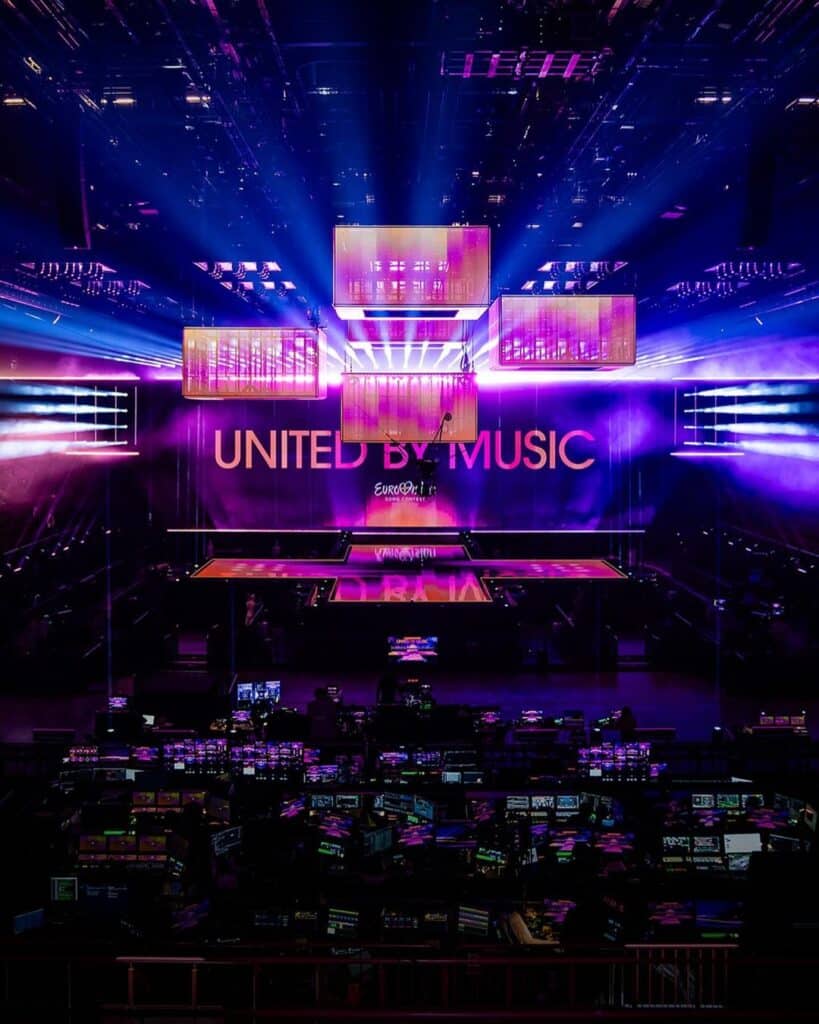
LED screens
As in previous years, the LED screens played a crucial role in creating the visual ambience of Eurovision. In particular, the four imposing LED cubes suspended above the stage were at the heart of the scenography. However, their installation was not without its challenges. Weighing in at 2.8 tonnes each, they needed to be sure of the load-bearing capacity of the hall's ceiling! The engineers had to design a support structure to distribute the weight evenly and avoid any risk of weakening the structure.
Being able to rise and fall, they offered incredible flexibility for visual display and staging. Whether as a playground for the introduction of Nemo, or as a giant LED panel, their use in transforming the stage to change the aesthetic of each performance was spectacular.
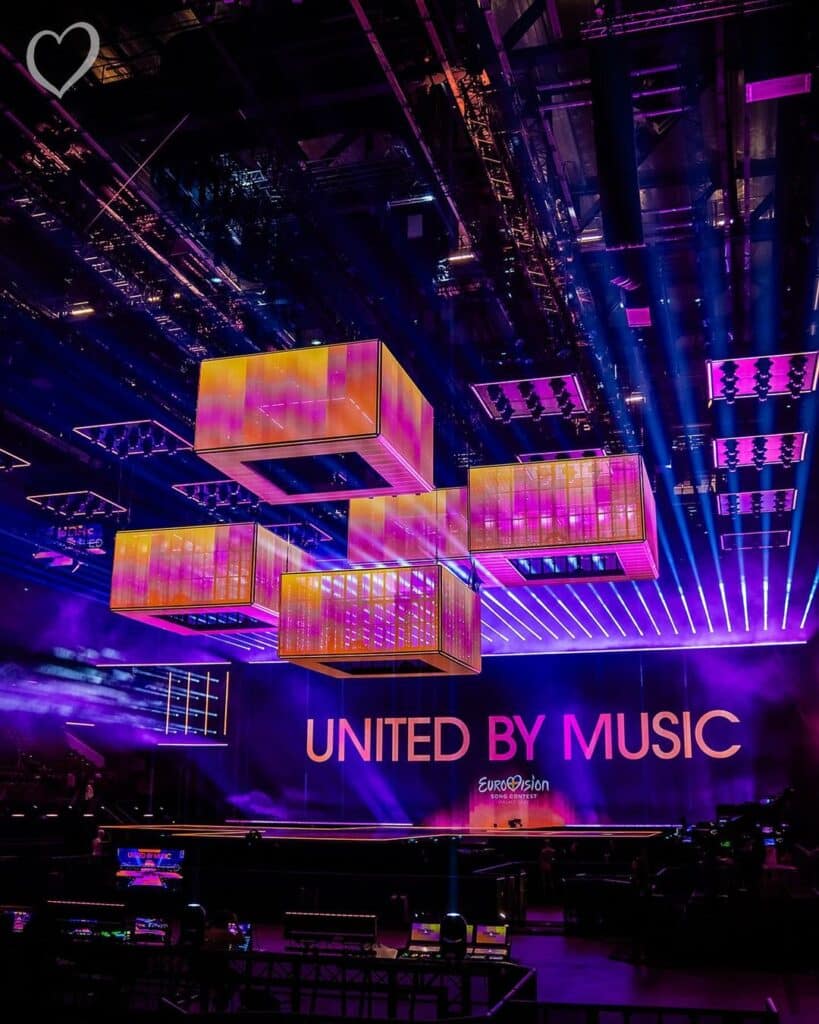
Using PSF for a cinematic look
One of the main technical innovations this year was the introduction of the Progressive Segmented Frame (PSF). This technique, which involves sending a progressive video signal in interlaced form, has produced a cinematic effect that is much appreciated by producers. Unlike traditional interlaced video, which can give a more "video-like" effect, PSF creates a more cinema-like effect, which has been particularly effective for musical performances.
This aesthetic choice, although controversial for some who argue that certain information is lost, was deemed magnificent by many members of the team, adding a new dimension to the visual experience of the competition.
The revolution in automated editing with Live Edit
For the first time, the competition used an automated editing system with the Live Edit tool. This technology, already tested at Junior Eurovision and the Super Bowl, was used to cut camera shots in real time. This system is based on the timecode of the performance, enabling all the production teams to work in perfect synchronisation. The idea was that all the departments, whether lighting, graphics or video, could share the same time base to coordinate their effects.
Collaboration between the different teams was essential: for example, the lighting designer and screen designer were able to integrate their notes directly into the Live Edit system, facilitating the creation and control of sequences for each performance. This made the show more fluid and precise, while offering real-time management of transitions and visual effects.
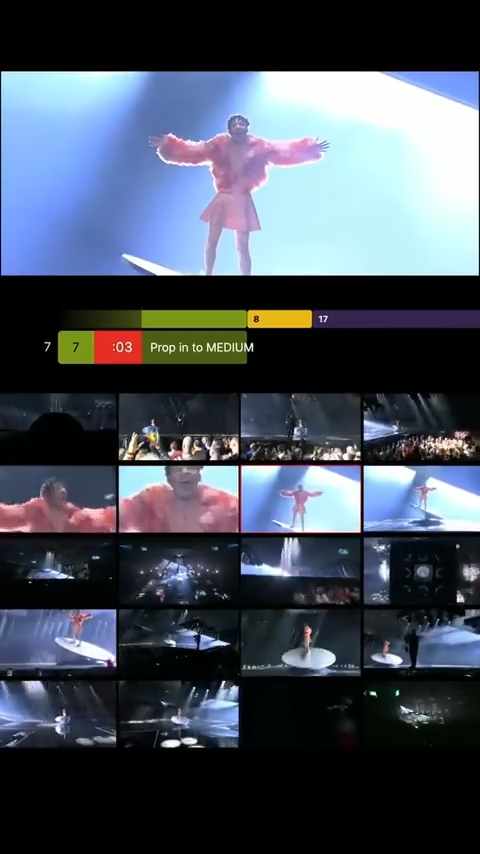
Activating and deactivating votes
The voting system also evolved this year, notably with the introduction of a 'deactivation cue', an audio and visual sequence that supported compliance with the rules on the duration of voting sequences. Respecting deadlines is crucial in this kind of production, and the integration of a LiveEdit timecode on the voting sequences ensured that the vote was managed fairly for all participants.
Artistic Direction: a bold visual creation
This year's artistic theme was inspired by Scandinavian architecture, with modular graphic elements and bright colours that perfectly matched the guests' costumes and the performances on stage. The work of design studios Uncut and Bold Stockholm created a dynamic and versatile look. The flexibility of the graphics meant that colours and contrasts could be adjusted in real time to suit every situation, from the presenters' outfits to the stage lighting.
One of the highlights of the graphic design was the reintroduction of large typographic characters, a nod to the old analogue scoreboards. This visual choice, used to display points and results, added a retro feel while remaining modern thanks to the use of digital technology. This reinforced the visual aspect of the competition while respecting its heritage.
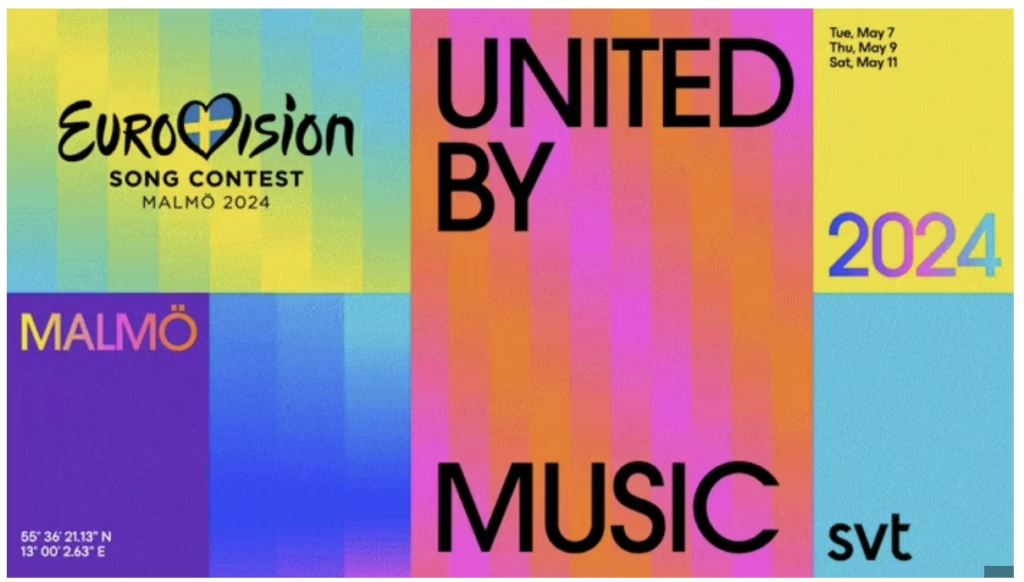
The stage and props: ever more spectacular creations!
The Eurovision Song Contest is also known for its spectacular staging, and the 2024 edition was no exception. The stage props were meticulously designed for each performance. For example, Switzerland's performance was accompanied by an impressive cylindrical platform, mounted on chains and hydraulic systems that allowed it to swivel and tilt. This accessory was controlled remotely by an off-stage operator.
Drop Cam: a clever solution
Eurovision 2024 saw for the first time the use of the Drop Cam at the heart of the stage, surrounded by suspended modular LED cubes, to provide spectacular aerial shots. Initially, the central Spider Cam, a camera suspended by cables, had been considered. However, due to the structure of the cubes, it became impossible to install. The Spider Cam's cables could have been caught in the moving parts of the set, compromising the safety and fluidity of the production.
The Drop Cam was the ideal solution. Suspended by a motorised cable, it captured unprecedented aerial angles of the scene, adding a cinematic dimension to the production.
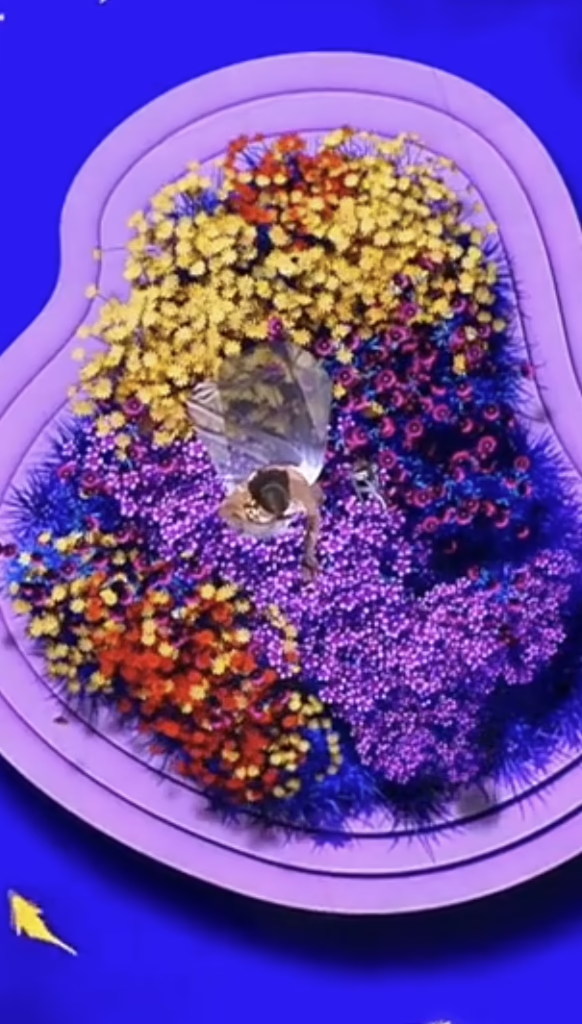
Sound system
Sound is another essential pillar of Eurovision. The sound configuration must not only ensure perfect audio quality for the audience in the arena, but also (and more importantly!) for the millions of viewers in front of their TV screens. This year, the use of L-Acoustics L2 and L2 DS speakers was a great success, providing uniform sound coverage despite the high height of the speakers to avoid interference from the lights and LED screens.
For microphones, Eurovision uses Shure Axient Digital microphones in conjunction with different capsules, as well as DPA 488 headset microphones for the hosts, guaranteeing optimum sound quality wherever the presenters are in the arena.
Lighting
Eurovision lighting is a spectacle in itself. And coordinating the lighting for a 360-degree stage was a real challenge. The lights have to be constantly adjusted so that every angle is perfect, regardless of the perspective of the audience or the cameras. The Follow-Me system used this year - with eight operators managing 64 spotlights - makes it possible to follow the artists in every possible stage configuration, guaranteeing perfect luminosity and accent at all times.
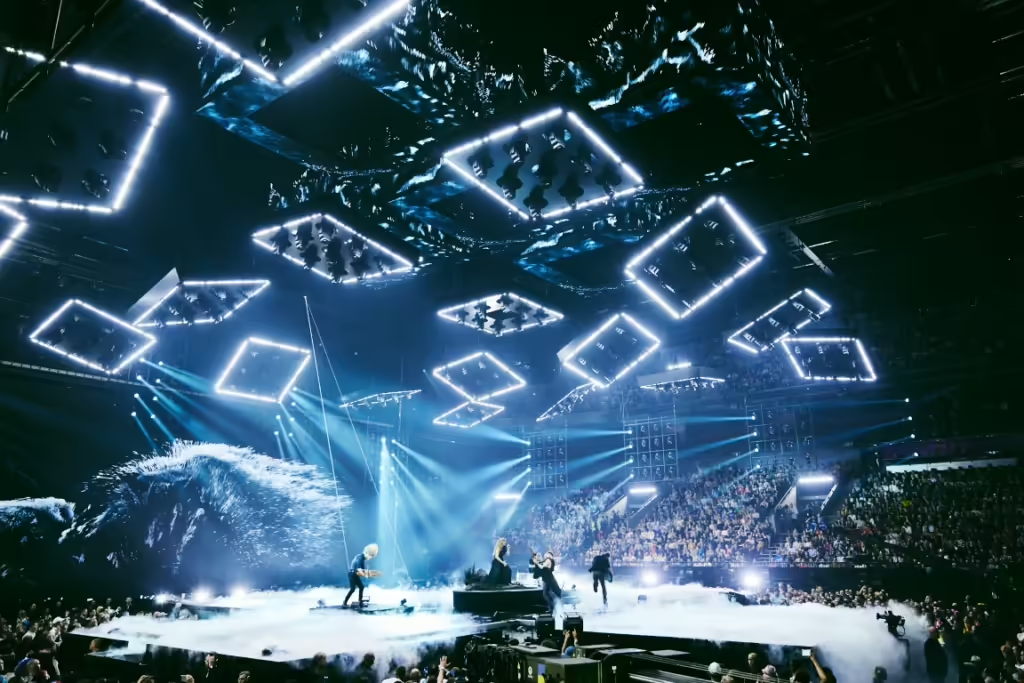
The technology behind the Eurovision show every year is a blend of ingenuity, precision and collaboration. From the stage to the LED screens, from the sound to the lighting, every element is interconnected to deliver an incredible experience to the audience. In this constant quest for excellence and innovation, Eurovision continues to push back the boundaries of what is technically possible, delivering a breathtaking spectacle every year.
